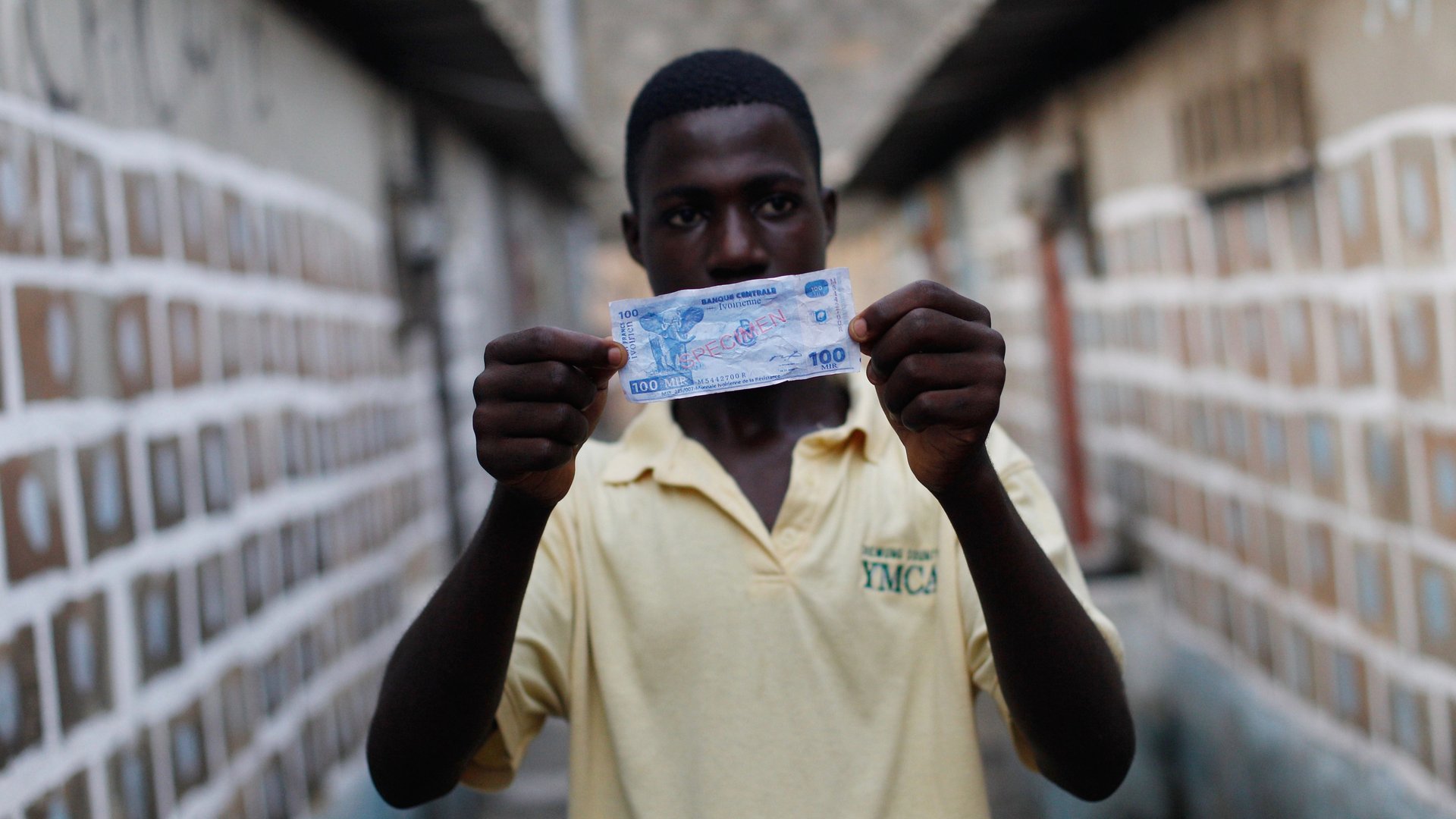West Africa now has its own digital currency
Correction: The original version of this story referred to the West African eCFA using blockchain-based technology. It does not.


Correction: The original version of this story referred to the West African eCFA using blockchain-based technology. It does not.
Senegal will soon begin using a digital currency in 2017. It’s another opportunity for financial technology (fintech) to help emerging markets leapfrog traditional banking systems and bring financial inclusion to more people.
If the Senegal roll-out is successful, the currency will be used in most of Francophone West Africa Cote d’Ivoire, Benin, Burkina Faso, Mali, Niger, Togo and Lusophone Guinea Bissau. Known as the eCFA, it is designed to operate alongside the CFA, the West African Franc. The eCFA will be issued by the regional bank Banque Régionale de Marché and will be used by countries in the West African Economic and Monetary Union (link in French), according to a statement.
The eCFA has been designed to work with existing mobile money platforms like MPesa, which have themselves been revolutionary for the millions of unbanked Africans. The e-currency will be produced with technology created by eCurrency Mint Limited, a company that enables central banks to create their own digital fiat currency, designed to be circulated alongside paper money as legal tender.
Just like paper money has a water mark, serial number and governor’s signature, these security features can be translated to a digital currency, explained Jonathan Dharmapalan, founder and CEO eCurrency Mint.
“By layering these together and binding them into a single instrument you have essentially created a central bank-issued digital currency,” Dharmapalan told a room at the Alliance for Financial Inclusion Global Policy Forum in the Mozambican capital Maputo in 2015.
The physical technology behind the currency is a digital currency production engine. In Dharmapalan’s presentation, the engine was a pyramidal structure with a tiny slot at the top. Each central bank will have their own engine, locked in a vault and kept offline. It will only be operational when the central bank wants to use it, he explained.
The advantages represented by the new technology have been tempered by a lack of clarity on how exactly the system will work. Skeptics say it’s unclear what kind of distributed ledger—the foundation of blockchain technology—the new currency will use, which could introduce a host of unforeseen regulatory and distribution issues for the West African regional bank.
Tunisia became the first African nation to use blockchain technology to digitize its currency, launching the eDinar earlier this year. Last year, Ecuador launched the first state-sponsored e-currency in the world.
Central banks around the world have kept an eye on the disruptive technology of cryptocurrencies. On the one hand, they’re excited about the distributed ledger innovation that allows the secure transfer of information, without a third party, according to a 2015 report released by the Bank for International Settlements (PDF), of which more than 60 central banks are members.
Digital currencies, however, are also difficult to regulate, and until now had no links to sovereign currencies. A digital currency issued by central banks allows national treasuries to make use of all the technological advantages of cryptocurrencies, without relinquishing control to decentralized organizations like Bitcoin.
With banks taking charge of issuing e-currency, they maintain their role as sole issue of national currency, disrupting the disruptor before independent blockchain currencies even gained a foothold in Africa.